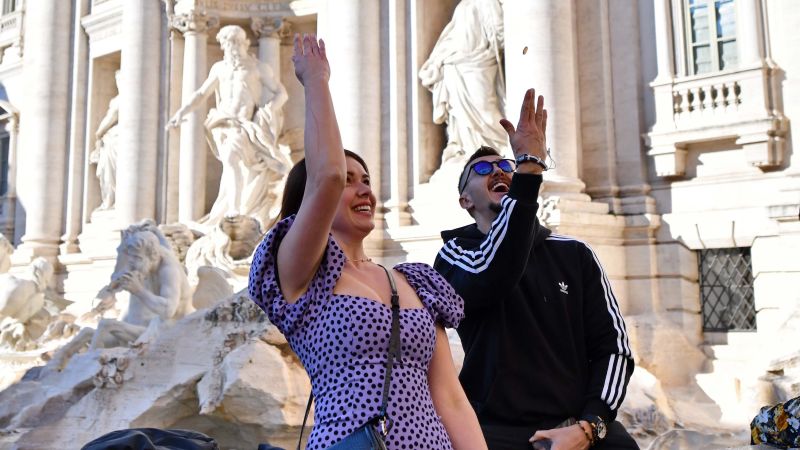
Why do we toss coins into fountains?
CNN
All over the world, and for centuries, people have thrown coins into fountains, wishing wells and rivers for good luck.
All over the world, and for centuries, people have thrown coins into fountains, wishing wells and rivers for good luck. It’s a tradition widely depicted in movies, ranging from Disney’s “Snow White and the Seven Dwarfs” to the 1954 film “Three Coins in the Fountain”; and in the lyrics of viral modern songs such as “Call Me Maybe.” Throwing coins into fountains is a practice many people have grown up seeing and a superstition many have participated in. A trip to Rome is not complete without a coin toss backward into the Trevi for the promise of one day returning to the city. Some fountains collect thousands, or even millions, of dollars worth of coins each year. So why do people do this and what happens to all of that money? Although its origin is unknown, the custom dates back to Roman-British and Celtic mythology. The idea stems from people leaving a monetary offering to spirits or supernatural forces that exist in nature. It has long been believed that spiritual entities reside in or transit through water because it’s a cleansing element necessary for life. One of the oldest examples of a wishing well resides in England’s Northumberland County in England where people made offerings to the goddess Coventina. Thousands of coins were found within the well from eras between the first and fifth centuries, according to researchers at the UC Irvine, proving people have been throwing coins for generations.

Travis Tanner says he first began using ChatGPT less than a year ago for support in his job as an auto mechanic and to communicate with Spanish-speaking coworkers. But these days, he and the artificial intelligence chatbot — which he now refers to as “Lumina” — have very different kinds of conversations, discussing religion, spirituality and the foundation of the universe.

 Run 3 Space | Play Space Running Game
Run 3 Space | Play Space Running Game Traffic Jam 3D | Online Racing Game
Traffic Jam 3D | Online Racing Game Duck Hunt | Play Old Classic Game
Duck Hunt | Play Old Classic Game










